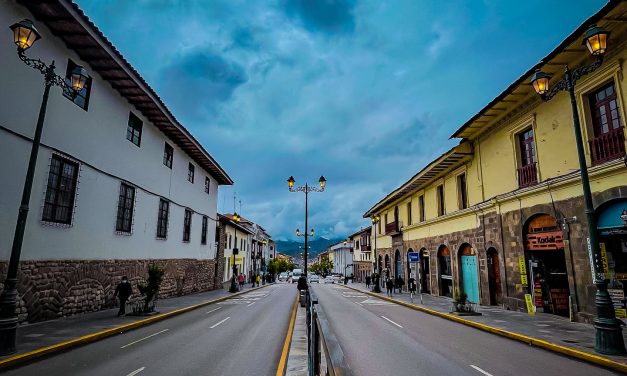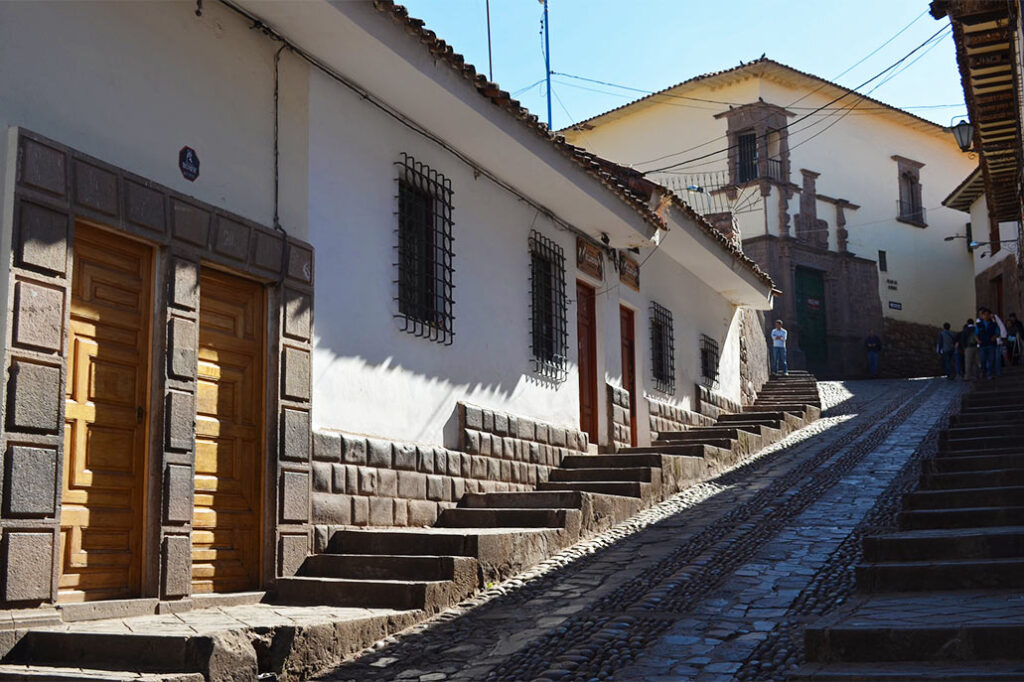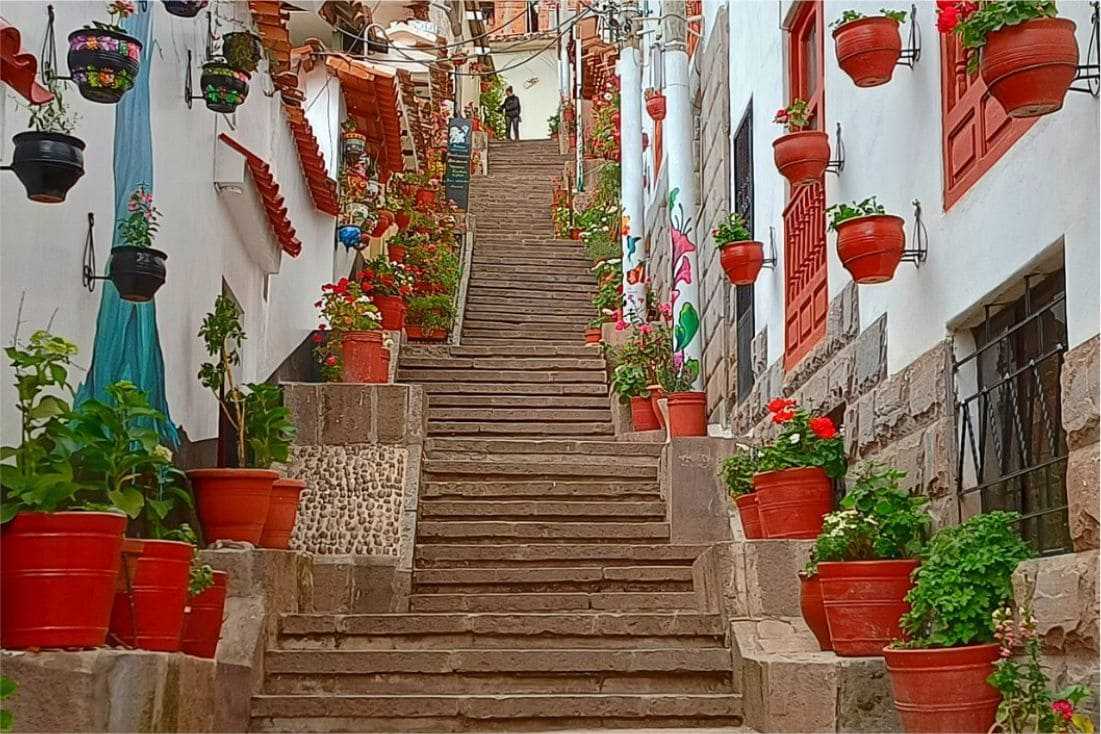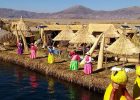When talking about Cusco, it’s common to imagine Inca archaeological centers and plazas full of history. However, the streets of this ancient city also hold fascinating stories, unique architecture, and secrets that lead visitors to better understand the past. If you’ve ever wondered what gives Cusco its special character, the answer lies in exploring its streets.
Here at Machu Picchu Wayna, we’ll explore the main streets of Cusco, highlighting their history, points of interest, and curiosities.

Emblematic Streets of Cusco
Hatun Rumiyoc Street
This street is one of the most emblematic in Cusco. Its name, which in Quechua means “great stone,” reflects the importance of this place during the Tahuantinsuyo era. This street was part of the ancient road that connected the Inca city with the administrative and religious center of Qorikancha. Currently, it is famous for housing the Stone of the Twelve Angles, a precisely carved piece that fits perfectly into the wall of what was once the Palace of Inca Roca.
Various legends surround this stone and the street itself. One of the most popular states that the perfect placement of the stones was not only due to advanced technical knowledge but also respect for nature, as it was believed that each stone had its own spirit. Another legend mentions that the Stone of the Twelve Angles was guarded by Inca priests, who considered that its angles symbolized the cardinal points and natural cycles that guided Andean life.
In addition to the emblematic stone, visitors can enjoy the San Blas Convent and various craft shops that line this street.

Loreto Street
Loreto Street, known for its Inca walls that still remain intact, connects the Plaza de Armas with Coricancha. It is believed that this street was a main route for religious ceremonies during the Inca period.
The Santa Catalina Convent and the original stone walls are some of the most outstanding attractions.
Resbalosa Street
Resbalosa Street is located in the historic center of Cusco, starting from the Plaza de Armas and ascending towards the San Blas neighborhood.
It offers panoramic views of the city center, with its colonial rooftops and surrounding mountains, making it an ideal place to enjoy Cusco’s urban landscape.
- Wear comfortable, non-slip footwear to enjoy the climb and the view without worries.
Suecia Street
Located near the Plaza de Armas, Suecia Street was one of the first to be inhabited by Spanish settlers. Its name refers to a connection with European merchants.
- Colonial architecture: In its buildings, you can appreciate details of the typical architecture from the colonial period.
- Quiet atmosphere: Unlike the busier streets of Cusco, Suecia Street offers a more relaxed atmosphere, ideal for strolling and enjoying the city at a slower pace.
Purgatory Street
Purgatory Street in Cusco has its name associated with a popular legend. It is said that a strong-willed woman lived on this street, whose presence continued to disturb neighbors with strange noises and voices after her death. To appease her spirit, her son placed a box with the message “alms for the souls in purgatory” at the door of her house. This story gave rise to the street’s name.
In addition to its peculiar name, this street stands out for its tranquil atmosphere and the views it offers towards the historic center.
Ceniza Street
Ceniza Street in Cusco received its name due to an event related to the plague of 1719, which caused numerous deaths in the city. It is said that a neighbor suggested that residents ask priests for remains of burned hosts, Palm Sunday palms, and consecrated oil, and use these elements to draw crosses on doors to protect themselves from the disease. Ashes were also thrown on the pools of blood left by those affected. This act led to the street being named as such.
Near the street, you can find art galleries and cafes that combine traditional and contemporary styles.
Tiger Street
Tiger Street in Cusco has its name related to a local legend. It is believed that, in colonial times, a tiger, which was actually a puma or large feline, used to roam the area. The street received this name due to the presence of this animal, which was seen as a symbol of strength and danger.
Street art and small souvenir shops make this street a vibrant place full of life.
Palace Street
Palace Street got its name due to its proximity to the Inca Palace or Palace of Inca Roca, one of the main buildings of the Inca empire. This street was one of the important routes within the imperial city, connecting various key points in the urban area.
Just steps away from this street, you’ll find the Pre-Columbian Art Museum and Plaza Nazarenas.
Pampa del Castillo Street
This street owes its name to an Inca castle that was once located nearby. Although it no longer exists, the place retains its cultural value.
From this street, it’s easy to access minor ruins and explore more of the Inca architecture in Cusco.
Streets with History and Charm in Cusco

Marqués Street
Marqués Street in Cusco is named in honor of the noble titles granted to Spanish settlers during the viceregal era. In particular, the name refers to the Marquis of San Juan de Cuychayoc, who was an important nobleman and figure of the colonial period. This street, which is part of the historic center of Cusco, reflects the influence of Spanish nobility in the city during the colonial period.
Colonial balconies and old mansions stand out along this street.
Admiral’s Slope
The Admiral’s Slope is one of the best-known roads for its steep gradient. Its name refers to Antonio de Mendoza, a nobleman and admiral from the colonial era. It is said that he lived in the area and that the street was named in his honor.
In terms of architecture, the slope preserves colonial elements, with period constructions that are still maintained in the area. The street connects several important points of the city and is one of the emblematic routes that show the history and urban structure of Cusco, particularly its development during the viceregal period.
San Blas Slope
The San Blas Slope is a steep street located in the traditional neighborhood of San Blas, in the historic center of Cusco. This street is known for its pronounced gradient, which makes it a challenge for visitors, but also gives it a picturesque character.
Characteristics:
- The street is paved with stones of Inca origin, which gives it an authentic and ancient appearance.
- It is an area frequently visited by tourists due to its colonial architecture and proximity to important tourist points in Cusco.
- The San Blas Slope is full of art shops and artisan workshops, making it an attractive place for those looking for souvenirs and local handcrafted products.
Don’t miss the San Blas Church and the workshops of local artists.
Bitterness Slope
The Bitterness Slope has an origin related to tragic events from the colonial era. It is said that the name comes from a legend linked to a painful story of unrequited love. According to tradition, a young woman, in love with a man who did not reciprocate her feelings, frequently climbed this slope while crying over her suffering. The pain and tears she shed while walking along the street gave rise to the name “Bitterness.”
Its narrow paths and architectural details make this slope a place full of mystery.
The Seven Iconic Streets of Cusco

Seven Snakes Street
Seven Snakes Street, known in Inca times as Amaru Qhata or “Slope of the serpent,” is a historic street that connects Plaza de Nazarenas with the San Blas neighborhood. Its name comes from the 14 serpents carved in relief on its walls, seven on each side, representing the serpent, a symbol of wisdom and the underworld in the Andean worldview.
The street is part of the Monumental Zone of Cusco, recognized as a World Cultural Heritage Site by UNESCO.
Seven Lambs Street
Seven Lambs Street has a name that comes from a local legend. It is said that in colonial times, a man from the region, known for his great love for animals, had seven little lambs that always accompanied him. The story goes that, while walking down the street, the lambs would follow him, creating a scene that was so characteristic that the neighbors began to refer to that street as “Seven Lambs Street.”
Seven Little Angels Street
Seven Little Angels Street gets its name from a legend that says seven angels protected the neighborhood’s inhabitants. It is said that the angels manifested as bright lights during the night, providing help and blessings to the people. The street retains a mysterious air, being a place of interest for those seeking to learn about local legends.
Seven Little Devils Street
Located in the San Blas neighborhood, it owes its name to a local legend. It is said that in ancient times, this street was a place for secret meetings between lovers. The legend says that the devil tempted couples, which gave rise to the name “Seven Little Devils.” Although nowadays the street has changed due to increased traffic and modernization, it remains a site of interest for those who want to learn about the traditions and legends of Cusco.
Seven Quarters Street
Seven Quarters Street is culturally important for its link to colonial history. Its name comes from the stone blocks used in its paving, a construction technique that combines Inca and colonial elements. This street is part of the monumental zone of Cusco, preserving its historical heritage and being an attraction for both residents and tourists.
Seven Windows Street
It gets its name from the seven windows that adorn one of the most representative colonial buildings on the street. These windows, of colonial style, are found in an old building that, it is said, was an important residence in the colonial era. The number seven, moreover, has symbolic value in Andean culture, related to spirituality and cosmic cycles. The street, known for its historical architecture, remains an important point of interest in the center of Cusco.
Seven Mascarons Street
Seven Mascarons Street is known for the mascarons carved in stone on its colonial facades. These human faces, which have symbolic value of protection and power, reflect the influence of the colonial period on local architecture. The street maintains its cultural importance due to the mixture of indigenous and colonial architectural styles.




